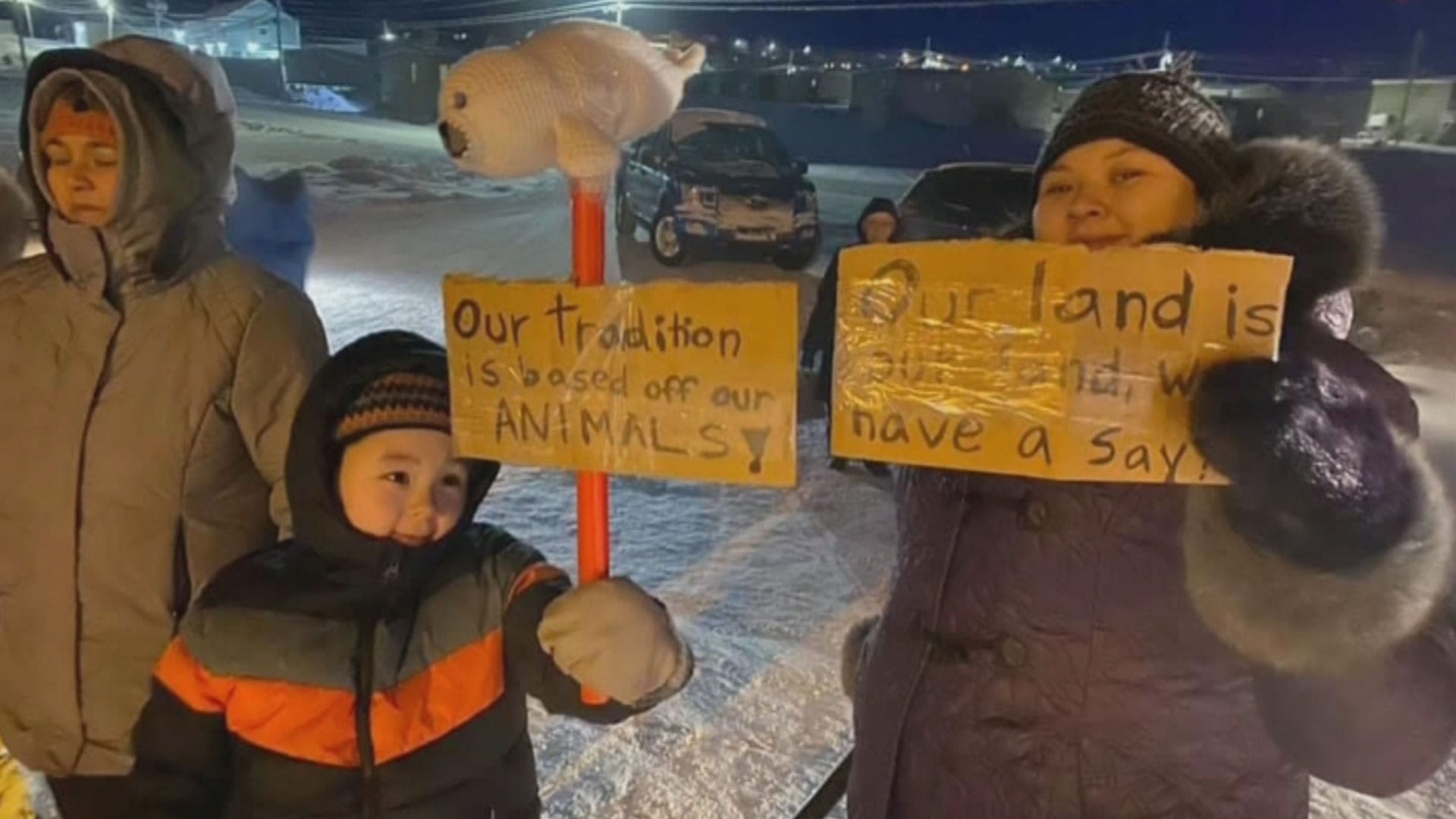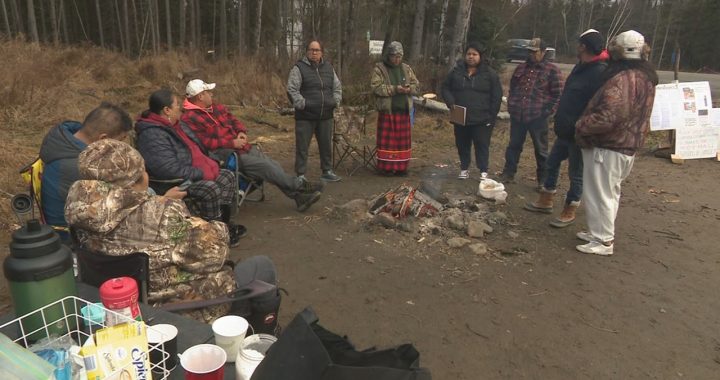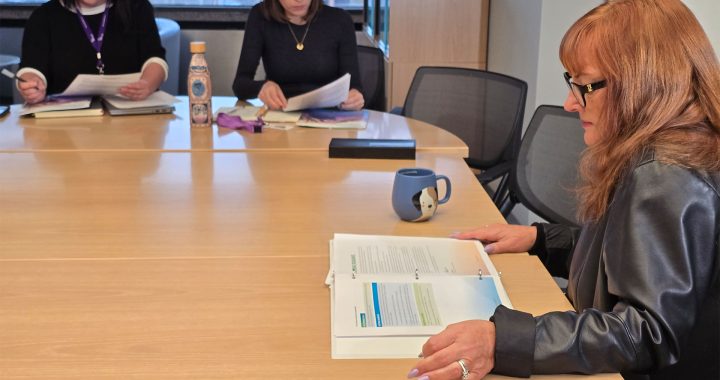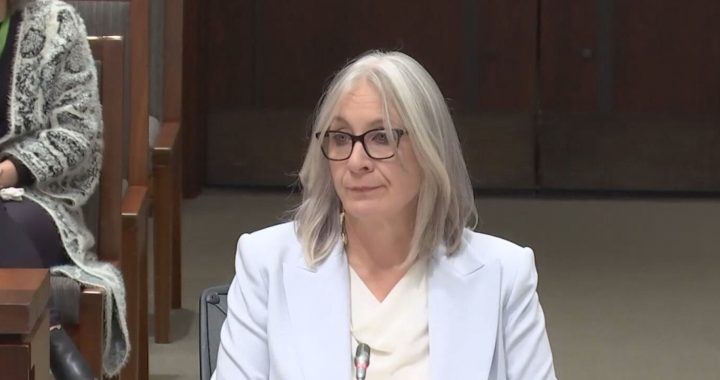An Access to Information request obtained by APTN News shows just how concerned Nunavut RCMP was in February 2021 when a group of protestors cut off air access to the Mary River iron ore mine.
On Feb. 5, a group of protestors camped on the runway and blocked road access to the Mary River Iron Ore mine, located at the north end of Baffin Island to oppose a plan that would expand a mine and see a railway built to haul iron.
They stayed on site until Feb. 11, effectively shutting down the operation at the same time a public hearing into the mines expansion plan was being held in Pond Inlet, the closest community to the mine site.
In a report to senior RCMP management on Feb. 7, 2021, V Division (Nunavut) Staff Sgt. Denis Lambe wrote, “With over 100 employees set to leave on Tuesday Feb. 9, hostilities may be inevitable.”
Lambe explained in the same report that, “Employees currently at the mine are becoming increasingly agitated as some have very important engagements they need to attend to (e.g. funerals, medical appointments, children’s medical appointments).”
APTN received more than 300 pages of RCMP documentation that outlines their planned response, action plans, a series of meetings, media monitoring and messaging performed by the Mounties during the protest.
Read the ATIP documents here:
Notes from daily meetings about the protest contain the outline of their plan.
In a Feb. 8 meeting, RCMP discussed their concern that the mine was supposed to fly out staff the next day, and employees were becoming concerned about getting home to their families.
On Feb.9, eight members of the RCMP’s Nunavut division, both civilian and commissioned met to discuss the situation.
According to the meeting notes, Lambe is quoted as saying that their “Immediate goal is to get the protestors off runway. If we can get them off runway then we would need to get access to land on runway with members in case it gets to the point where protestors need to be arrested.”
Lambe also points out the steps the RCMP was taking to remain seen as neutral.
“Security on site have been advised that we do not want anything to do with Baffinland. We don’t want to be seen with them, we need to remain neutral,” the meeting notes said.
Read More:
High Arctic Protest: Inuit blockading Mary River Iron Ore Mine since Feb. 4
That hope to be neutral comes up time and again throughout the documents, with RCMP prepared to pay for whatever items, including trucks, places for officers to stay and gun lockers.
In that same meeting, Insp. Adam MacIntosh asked Lambe how long they plan to stay at the mine site. Lambe answered, “until the protest is over.”
MacIntosh also makes the point that if they were to arrest protestors and then let them return to Pond Inlet by snowmobile, they would have to return their rifles for protection on the land.
Another concern was COVID-19. At the time, to enter Nunavut, you needed to spend two weeks in isolation at a designated place in southern Canada. The mine was considered separate from that, and their employees were able to fly in and out without isolating since they weren’t in a Nunavut community.
“Reps from Baffinland want to know what RCMP’s involvement will be. (The RCMP does not want any/much involvement.),” MacIntosh is quoted saying in the meeting. He adds that with the scheduled shift change on Feb. 9, Baffinland was “feeling the pressure.”
In that same meeting, Nunavut RCMP Insp. Winston Shorey said Nunavut RCMP had received calls from the families of some of the Baffinland employees. “OCC [Operational Communications Centre] took a few calls last night saying they were being held hostage,” he said.
By the time RCMP met again on Feb. 10, the commanding officer was wondering how patient the Baffinland employees would be.
“We also have to think of the 740 employees at the mine who are getting angry and antsy,” said Chief Supt. Amanda Jones according to the documents. “Time is not on our side here. We have people who just want to leave and go home, we have people who are running out of medication.”

They also discussed Baffinland’s response.
“Baffinland needs to know not to try and sneak a jet in when/if we can get them off the runway while talks are still happening,” said Lambe.
Media response comes up during a few of the meetings.
In a Feb. 11 meeting, Jones asked if they should put out an RCMP press release stating that the protestors have left. MacIntosh replied that he is “of the opinion to not say a word to media.”
While RCMP wasn’t talking with the media, they were listening and taking notes.
The documents included many pages of news stories and social media postings, including posts made by residents on their own Facebook pages and the comments section from Iqaluit-based newspaper Nunatsiaq News.
These were gathered by both the RCMP and by Baffinland, the owners of the mine, themselves.
The RCMP term is “Open Source Report” and civilian RCMP employee Laura-Lynne Smith was the one who gathered the information.
According to the documents, “On 2021-02-05 CM (Civilian Member) Smith was tasked with reviewing open source materials gathered by Baffinland’s Operational Health and Safety Officer. CM Smith was also tasked with continuing to review social media posts about the Nuluujaaq Land Guardians.”
The photos of Facebook pages contained in the access to information request show that the comment space shows the text “comment as Baffinland Iron Ore Mine,” which means that whoever took the photos was monitoring the social media using Baffinland’s Facebook account.
A social media analysis from Baffinland shows that 85 per cent of online posts about the blockade came from Twitter and that the sentiment was 70.9 per cent negative, against Baffinland.
Additional RCMP arrive at the Pond Inlet airport, about an hour ago. I have a request in to the Nunavut RCMP, asking if they are sending more officers to Pond Inlet. They did not immediately respond. pic.twitter.com/JDmYmChK1B
— Kent Driscoll (@KentDriscoll) February 10, 2021
Included was a Tweet by this reporter. APTN obtained a photo of RCMP officers arriving in plain clothes Pond Inlet on Feb. 10 and posted it to Twitter. Pond Inlet residents at the airport were wondering why three RCMP trucks were showing up to greet the flight.
Jones wrote in a letter to RCMP Commissioner Brenda Lucki on Feb. 11.
“When our team arrived in Pond Inlet on the commercial flight last night, photos of the team arriving was (sic) posted on Twitter and people were spreading the news that RCMP from Iqaluit were heading to the mine,” Jones wrote.
“The three police vehicles arriving at the airport picking up four people in jeans caught local attention. This is positive in that is shows the RCMP were taking this seriously.”
RCMP were also in near constant communication with officials from the Baffinland Iron Ore mine, and soon discovered that they would need to coordinate with the mine in order to try and resolve the standoff. Throughout the documents APTN obtained, all mentions of just how many RCMP members would be needed are redacted. They did share that information with the mine.
A Feb. 9 letter from MacIntosh to Timothy Sewell, Baffinland’s senior director of Health and Safety was labelled ‘CONFIDENTIAL Baffinland Blockade Information”.
In it, MacIntosh lays out the broad strokes of the RCMP’s two phased plan. Phase one was negotiation. Phase two would have escalated to removing the protestors from the runway.
“The initial purpose of their travel is not enforcement but communication and de-escalation. The enforcement component will be a last resort and only through a court order as previously stated.”
MacIntosh wrote how many members they planned on sending but that number is redacted from the copies received by APTN.
Costs were also at the top of the RCMP’s concerns during the runway blockage.
MacIntosh wrote to RCMP northwest director of Assets Manuel Amorin to let him know they would be making a request to spend more than $10,000, and to possibly prepare to spend “hundreds of thousands at a minimum” if the protestors needed to be removed.
AN RCMP budget document says that V Division spent $19,500 on operational expenses, and an additional $10,255 on overtime for officers.
On Nov. 8, the federal government sided with the Nunavut Impact Review Board (NIRB) and rejected the expansion of the mine.
“The other responsible ministers (Environment, Fisheries and Oceans, Transport) and I have carefully considered the Board’s Report,” said Dan Vandal, minister of Northern Affairs, “to accept the Board’s recommendation that Phase 2 should not proceed at this time.”









